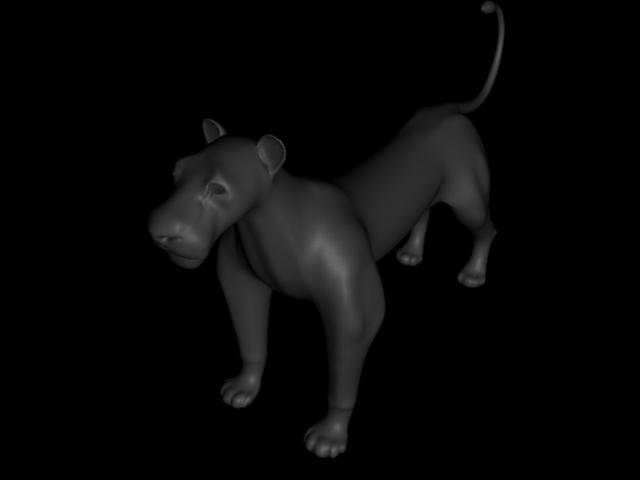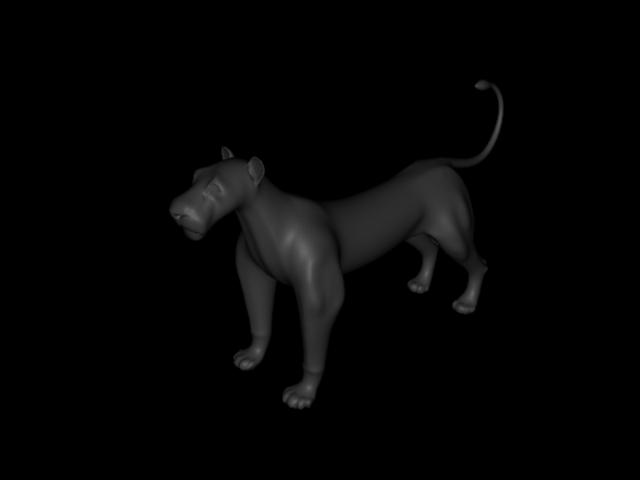yeah well 4K will always have “more” in it…but consider the following;
1.Take your map and tune its tonal range within photoshop using curves.
Basically place a point at a mid point of the range, black near one edge and the same with white.
What this does is expand the values of details which were all bunched up around mid grey.
- Generate two maps, one for course/big details and the other for fine/small details, combine the two in your 3d app via a shader network.
For this you would have needed to worked your mesh into layers to extract seperate maps…however see the alternative below
2 Alt. Generate a map for each subd level. You will use the lowest subd level map for your disp. The other maps you can edit in photoshop.
Overlay the maps over each other, this new map will retain details but will have “muted” larger details…Now either apply it as a bump or following the above example this new map would be the fine/small detail.
[The Alpha gain 2.2 and alpha offset -1.1, represents the tonal range. Therefore take any alpha gain and divide by -2 to get the offset…its that simple.]
Tip: With envirnoment you can strategically spilt the geo apart therefore allowing you to use 2K maps on smaller pieces, giving you more texture space.
cheers:D


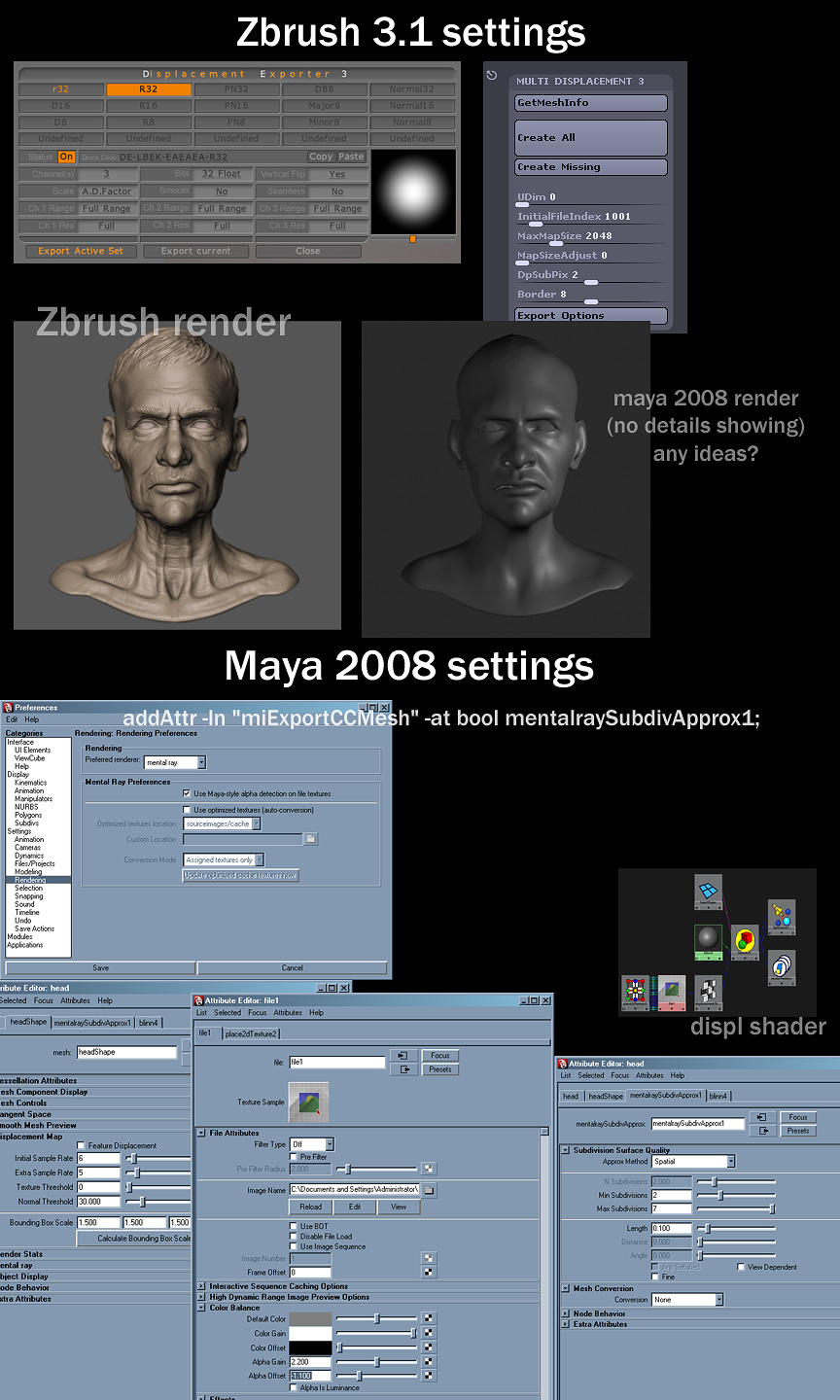


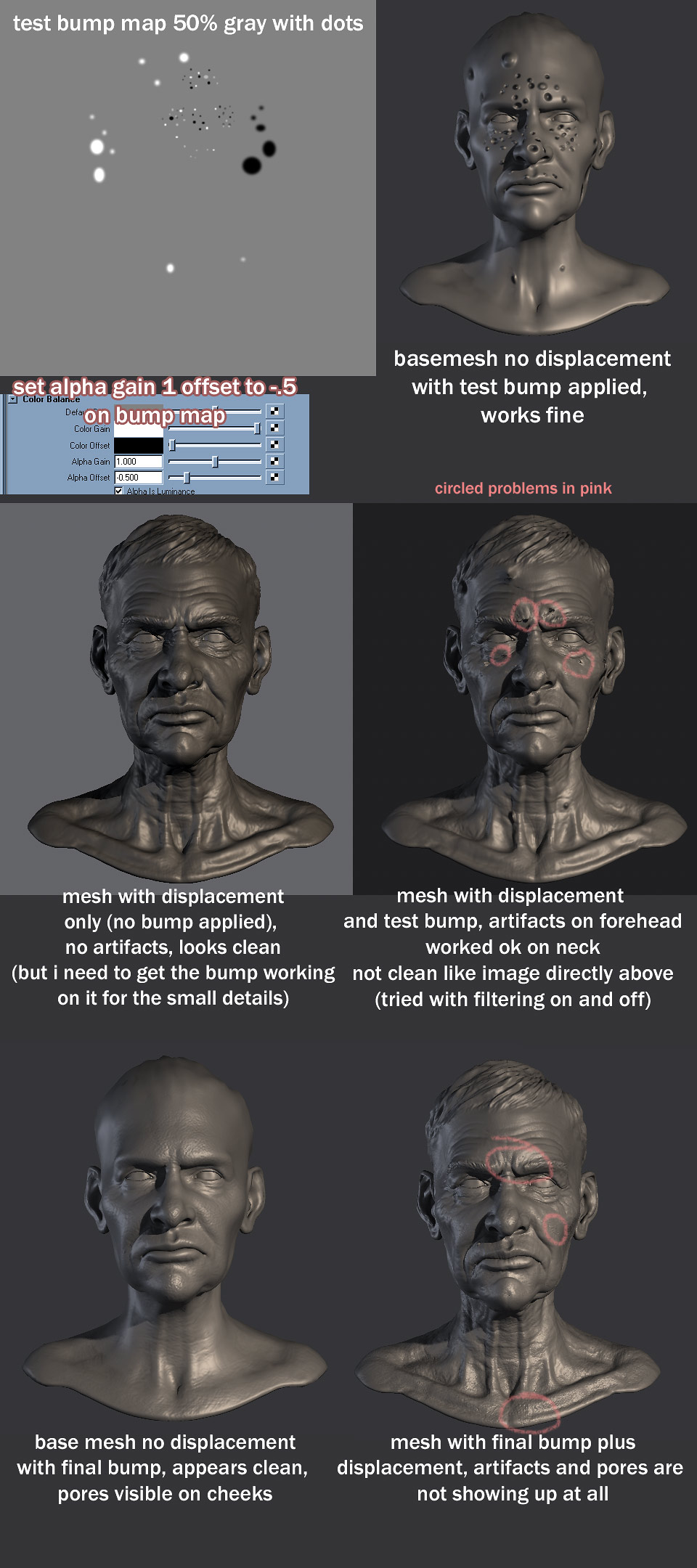
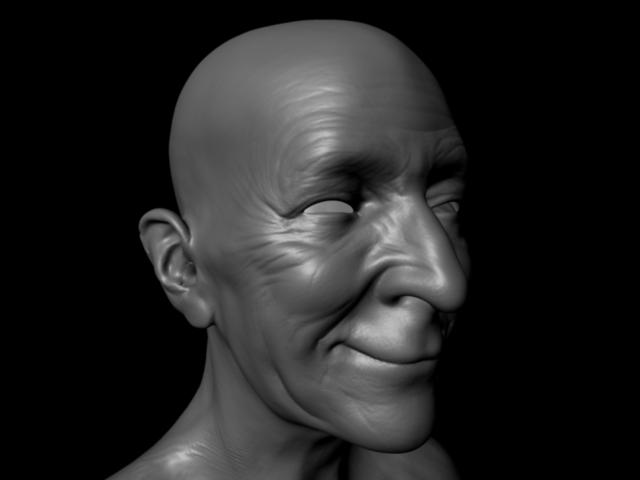
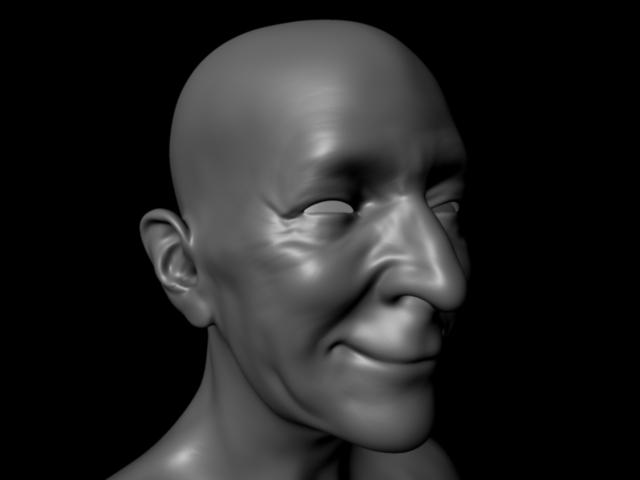
 Thanks again. Great job. The result is:
Thanks again. Great job. The result is: